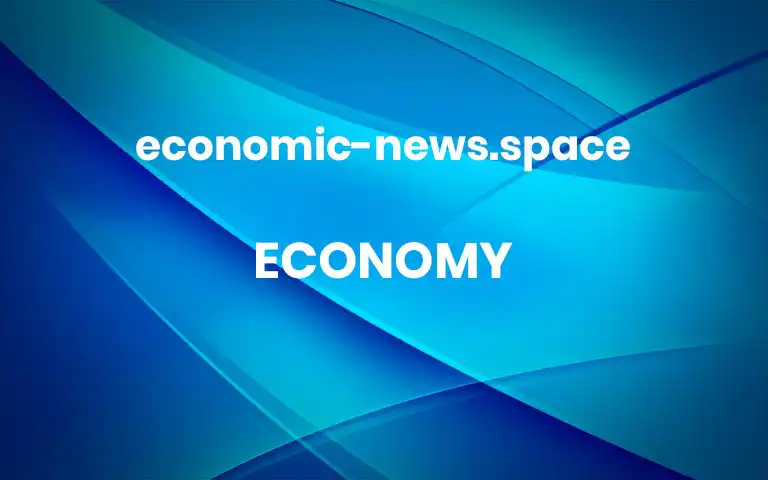Sarah Bloom Raskin, his choice for the Federal Reserve’s head of bank oversight, has faced staunch G.O.P. opposition over her climate views. Yet her private sector work is holding up her nomination.President Biden’s nominee for the top banking cop at the Federal Reserve was expected to face Republican backlash over her views on how finance should guard against climate change and her preference for tough regulation.She has. But it is Sarah Bloom Raskin’s tenure on the board of a financial technology company that has given Republicans a cudgel that they are trying to use to quash her nomination.Senate Republicans are preventing a vote on Ms. Raskin, a former Fed governor and Treasury official during the Obama administration, as they press for answers about whether she used her central bank connections to help the company, Reserve Trust, gain access to a lucrative Fed account in 2018. They have boycotted her nomination, refusing to show up to vote on it until she provides more details.By holding Ms. Raskin’s nomination hostage, Republicans on the Senate Banking Committee are also preventing Mr. Biden’s four other Fed nominees from advancing since Democrats have grouped the officials together. That includes the renomination of Jerome H. Powell, the Fed chair, who testified before lawmakers on Wednesday and was set to return on Thursday.Senator Sherrod Brown, Democrat of Ohio and the head of the committee, plans to try to hold another vote on Ms. Raskin and the other nominees as soon as possible, a spokesperson for the committee said Tuesday.“This is not the moment for political stunts,” Mr. Brown said on the Senate floor this week.Democrats have dismissed the opposition to Ms. Raskin as politically opportunistic and baseless, a crude attempt to tank a candidate whom bank-friendly Republicans dislike for her views on regulation. Senator Patrick J. Toomey, the Pennsylvania Republican who is leading the effort to kill her nomination, opposed Ms. Raskin from the outset because of her climate views.But interviews and nomination filings suggest that Ms. Raskin may not have been entirely forthcoming about what role she played in helping Reserve Trust secure its sought-after Fed account. She may have leveraged her connection to the Fed to try to help the company, whose board she sat on between 2017 and 2019.Ethics experts said that even if she had petitioned on the company’s behalf, that was likely neither illegal nor against ethics rules. But when questioned, Ms. Raskin has repeatedly said she does not remember what happened.Republicans have blasted Ms. Raskin’s lack of responsiveness and highlighted her payout from the firm, suggesting that she may have benefited financially from helping the company, taking part in the revolving door that many Democrats have denounced. She sold her stock for $1.5 million in 2020.The White House continues to support Ms. Raskin. Michael Gwin, an administration spokesman, said she had “earned widespread support in the face of an unprecedented, baseless campaign that seeks to tarnish her distinguished career in public service and her commitment to upholding the highest ethical standards any administration has ever put forward.”But the controversy surrounding her nomination could prove uncomfortable for Democrats, who are trying to prevent regulators from so frequently leaving the government to advise the sort of companies they once policed. “The Republicans do this all the time because they are seen as the party of business,” said Meredith McGehee, a longtime Washington ethics expert. “The vulnerability is that here you have a Democrat who’s in this position that’s in conflict with the rhetoric of the Democratic Party.”The issue centers on a wonky but increasingly important corner of finance.Ms. Raskin started on the board of Reserve Trust, a Colorado-based trust company that now calls itself a financial technology firm, shortly after leaving a top role at the Treasury Department in 2017. From 2010 to 2014, she served as a Fed governor.When she joined the board, the Kansas City Fed had recently rejected the firm’s first application for a so-called master account with the central bank. Such accounts allow firms to tap the Fed’s payment infrastructure, enabling them to carry out services for clients without relying on an external partner. They are hot commodities, and nonbank financial firms often strive but struggle to qualify for them.To qualify for the account, the firm changed its business model and reapplied in 2017.Dennis Gingold, a founder of Reserve Trust who was a longtime acquaintance of Ms. Raskin’s and who has donated to the political campaigns of her husband, Representative Jamie Raskin of Maryland, said in an interview that he had helped to bring Ms. Raskin to the company.Mr. Gingold said Ms. Raskin had called the Fed about the master account at his behest, because he was worried that the central bank was not giving the reapplication a fair consideration. From his Washington office, she phoned Esther George, the Kansas City Fed president. The call lasted two minutes and was “insignificant,” Mr. Gingold said, noting that Ms. Raskin simply “asked that the decision be made on the facts.”Mr. Gingold said he could not remember the date of the call. Mr. Toomey has said staff at the Kansas City Fed told his office that a call between Ms. Raskin and Ms. George happened in August 2017.Mr. Gingold does not know what led the Fed to approve the account, which he said it did in mid-2018, noting that it happened months later and after what he described as an opaque process.No evidence has suggested that Ms. Raskin’s intervention was the decisive factor in the approval, and the Kansas City Fed has issued a statement saying it followed its usual practices in approving the account in 2018.The account does appear to have been lucrative: Reserve Trust still prominently advertises its rare access.When another company took over the firm in 2020, it paid $7.50 per share for it — which was how Ms. Raskin made money from the company. Mr. Gingold said that Ms. Raskin had been given shares from his portfolio, and that he believed she acquired them in January 2018, which would have been after the reported call with Ms. George. She did not receive director’s compensation, as other board members did, he said.Nothing that happened obviously conflicted with ethics rules, experts said. The trouble for Democrats is that many of the details that have emerged either conflict with things Ms. Raskin has said or provide answers to questions that she did not respond to in her filings or confirmation hearing.In Ms. Raskin’s written responses to senators’ questions, she said that she could not recall who had recruited her to Reserve Trust’s board and that to the best of her recollection she had “received shares in Reserve Trust upon joining” the board. She did “not recall any communications I made to help Reserve Trust obtain a master account,” she said.“Based on what is in the public now, I think she complied with the relevant rules,” said Kedric Payne, senior director of ethics at the Campaign Legal Center. “The practical point is: Even if there’s no legal violation, the public wants to know if there is full transparency there.”Seats for Republican senators were empty last week on Capitol Hill during a scheduled vote on Ms. Raskin’s nomination.Sarahbeth Maney/The New York TimesRepublicans have pointed out that Ms. Raskin and her husband have also repeatedly failed to disclose her involvement with Reserve Trust on government filings.Ms. Raskin left her Reserve Trust service off her original questionnaire to the Senate Banking Committee, according to a Republican committee aide, though she did note her sale of Reserve Trust shares in her simultaneously filed financial disclosures to the Office of Government Ethics.Mr. Raskin failed to note the Reserve Trust shares on his financial filings in 2018 and 2019, and disclosed the 2020 share sale eight months late. He has attributed the late 2020 filing to a family tragedy — the Raskins’ son died by suicide on Dec. 31, 2020. The lawmaker’s office, when asked by email, did not explain why the shares were left off the earlier disclosures.If Ms. Raskin leveraged Fed connections, that would not have been unusual: People often profit from prior government positions. But the situation could look bad, as both the Biden administration and Senator Elizabeth Warren, a Massachusetts Democrat and one of Ms. Raskin’s champions on Capitol Hill, try to put a lock — or at least a temporary stopper — on the revolving door between Washington and Wall Street.Ms. Raskin has signed an ethics pledge that Ms. Warren asked all Fed nominees to sign, which would prevent her from working in financial services for four years after she left the Fed if confirmed to her new post.If Ms. Raskin’s nomination does come up for a vote, it “could be an issue,” said Ian Katz at Capital Alpha, a Washington research firm. “If it’s a close call and there are any questions of propriety, sure, it could sway a senator. We just don’t know that yet.” More




